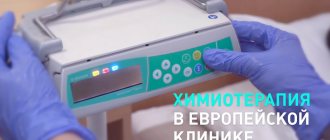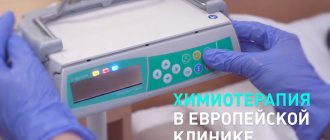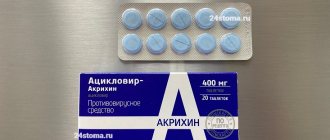“Effective treatment for HPV” - false or true?
It is important to understand that there are no serious and complete studies on any of the above drugs - randomized, double-blind, placebo-controlled trials. Advertising and laudatory publications and studies with non-representative samples are posted only on manufacturers’ websites and Russian-language resources. Apart from the CIS countries, these funds are not registered and are not used anywhere.
Many Russian gynecologists claim that drugs with unproven effectiveness successfully treat HPV: the test for the virus becomes negative after one or several courses. But this result is not a merit of the treatment; it means that the infection was transient and would have gone away on its own, even without the unnecessary drug and financial burden.
World practice
The US Center for Disease Control writes that specific therapy for HPV is not recommended. WHO in its fact sheet only talks about the need to treat the consequences that HPV can cause: cervical cancer, anal or genital warts. In men, oncogenic types of HPV can cause cancer of the rectum and penis.
In the modern world, there is no drug therapy, but much attention is paid to vaccination.
HPV vaccination
Two vaccines have undergone clinical trials and are registered on the market:
- Gardasil - protects against HPV 6, 11, 16, 18;
- Cervarix - protects against HPV types 16 and 18.
The drugs are very expensive (the price of one injection is about 6,000 - 10,000 rubles), so only developed countries can afford mass vaccination.
Ideally, all adolescents aged 11-12 years, regardless of gender, should be vaccinated (twice within six months) and adults under 26 years of age (three times after 14 years of age within six months). Russian vaccine instructions recommend three-time vaccination at any age.
Separately, it is worth mentioning that the American Alliance of Immunologists recommends vaccination against HPV for HIV. WHO, clinical studies of the Canadian Institute of Health Research and other publications speak about the effectiveness of vaccination of HIV-positive girls.
When should you get tested for HPV?
HPV testing is prescribed to women over 30 years of age with abnormal cytology or histology results. It’s just pointless and costly to carry it out like that. The results of the PAP test, together with the HPV test, help determine the correct interval before repeat cytological examination or colposcopy.
A positive HPV test does not mean cancer, it only allows you to make a rough prognosis; Moreover, the virus is not the only risk factor for cervical cancer.
The HPV test should not be used in large numbers - it is an additional (and expensive) screening method.
Result:
- There is no proven antiviral therapy for HPV, nor are there drugs that strengthen the immune system.
- It is not HPV that is treated, but its consequences: precancerous conditions and cervical cancer, neoplasms on the skin and mucous membranes. The treatment is not medicinal, but surgical: laser, cryodestruction, surgery.
- There is no need for everyone to get tested for HPV.
How is the virus transmitted?
The human papillomavirus is transmitted by contact from person to person. HPV penetrates through microtraumas of the skin and mucous membranes. The virus is most often transmitted sexually.
According to the data of Academician of the Russian Academy of Sciences, Doctor of Medical Sciences, Professor V. E. Radzinsky, Doctor of Medical Sciences, Professor I. M. Ordiyants and other researchers, up to 82% of women are considered infected two years after sexual debut; Moreover, even having one sexual partner, about 20% of women are infected.1
In the human body, HPV lives in two forms - in a “dormant” and active state. At the moment of activation, the virus enters an aggressive stage, it integrates into the DNA of the cell and starts the process of formation of defective (atypical) cells and the development of the disease.
Usually, such defective (atypical) cells with altered DNA are repaired or destroyed by the body, with the help of the immune system. But the papilloma virus has its own defense mechanism, which turns off the “alarm”, and the broken cell loses the opportunity to inform the immune system about its illness.
Our immunity continues to perceive this cell as healthy, and therefore does not prevent its division and transformation. Meanwhile, the virus seems to be hiding in a cell from the human immune system.
Diagnosis of genital herpes
Diagnosis of genital herpes is quite simple. If a person discovers external signs of genital herpes, he should definitely consult a dermatovenerologist, urologist or gynecologist as soon as possible!
First of all, the doctor conducts an external examination of the rash. In most cases, this is enough to make a diagnosis, since genital herpes has a characteristic clinical picture.
If the manifestations of herpes do not fit into the classical picture, the doctor has doubts, then laboratory tests for herpes are carried out:
- PCR testing for DNA of herpes virus types 1 and 2. (HHV-1,2, PCR) The test shows the presence of the herpes virus in the body, and also determines its quantity.
- Test for antibodies to the herpes simplex virus. A positive test result for M antibodies (IgM) indicates that the person most likely became infected with herpes for the first time. The presence of G antibodies (IgG) (anti-HSV (types 1 and 2) IgG) shows that a person has been infected for a long time, and an increase in the number of G antibodies indicates reactivation of the virus - relapse.
Cytokine response in viral infections
Cytokines with direct antiviral effects include alpha/beta interferon (IFN) and tumor necrosis factor (TNF), which are produced by NK cells. TNF is able to enhance IL-12-dependent production of yIFN.
The effector mechanisms of the cytokine reaction can be represented by the following mechanisms [3, 6]:
— alpha/beta-IFN products;
— activation of NK and cytotoxic lymphocytes;
- gamma-IFN products;
- redistribution of lymphocytes;
— expression of IL-1 and TNF genes;
— cascade activation of the production of other cytokines.
These mechanisms of innate immune activation in response to viral infection are fundamentally different from the body's responses to other pathogens. TNF and gamma-IFN activate macrophages, which participate in antiviral defense (Pokrovsky V.I. et al., 2003). As the viral infection progresses, the genes responsible for the synthesis of IL-12 are regulated, which is directly related to the production of gamma-IFN.
If the infectious process develops further, then the activation of nonspecific components of the immune system continues, namely:
— expression of cytokine receptor genes;
— redistribution of immunocompetent cells;
- increased activity of cytotoxic lymphocytes and production of gamma-IFN;
— induction of proliferation of NK cells and CD8+ memory T cells.
Thus, the IFN system not only carries out the first line of defense of the body against infections, but also participates in specific immune processes of destruction of foreign objects. If the immune system is responsible for the unchanged protein composition of the body, then the IFN system monitors the maintenance of genetic homeostasis, i.e. maintaining the constancy of the composition of the organism at the genome level [3].
The antiviral effect of IFN inducers is realized through the mechanisms of their activation of cytokines, which are suppressed during viral infection. It is believed that the ability to “prohibit the switching off” of cytokines during viral infections may become a method for selecting new antiviral drugs.
The first representative of this emerging unique group of antiviral drugs is the drug Allokin-alpha, the creation of which was based on the ability of alloferons (oligopeptides of the insect immune system) to “prohibit the switching off” of cytokines, honed over millennia by insects.
Thus, cytokine reactions are directly related to the antiviral effects of cytokines. They can be realized at the level of infected cells and/or activate nonspecific cellular immunity, with the final stage of the cytokine reaction being participation in a specific immune response.
Great importance is attached to the interferon system in the body's antiviral defense. Chronic viral infections (primarily herpetic and herpesvirus infections, viral hepatitis B and C), as well as some diseases of non-viral etiology, are characterized by a pronounced suppression of interferonogenesis.
At the same time, IFN production is more significantly suppressed in patients with severe chronic disease. Background levels of serum IFN are combined with a sharply depressed ability of immunocytes to synthesize alpha and gamma IFN.
Manifestations of genital herpes
Genital herpes manifests itself in the form of various rashes: blisters located on normal or reddened skin, ulcers, and sometimes cracks in the mucous membrane. At first, the contents of the bubbles are transparent (Figure 1), then, after 1-3 days, the contents become cloudy (Figures 2, 3). On days 3-4, painful ulcers form in place of the opened blisters (Fig. 4.5), often covered with honey-yellow crusts. The rash is usually localized on the genitals and anal area.
In women, the rash is localized in the perineum, pubis, labia and vagina. Genital herpes in men is characterized by rashes in the groin, scrotum, glans penis, and foreskin.
The affected areas cause a burning sensation, itching, and cause severe pain when walking, especially when playing sports. During relapses of herpes, women and men are forced to completely abandon sexual relations. The rashes are unsightly, and damage during sexual intercourse causes severe pain.
Patients with prolonged and frequent relapses develop complexes and often fall into depression, which can lead to problems both in the family and at work. Often such patients are forced to seek help from a psychotherapist.
Antiviral activity of Allokin-alpha
Allokin-alpha is an antiviral drug, a representative of a new family of antiviral peptides of natural origin. It is a synthetic linear cytokine-like oligopeptide with a molecular weight of 1265 daltons and consists of 13 L-amino acids. The active substance of Allokin-alpha is alloferon [6–9].
Allokin-alpha refers to immunotropic drugs. Its action is aimed at enhancing the recognition of viral antigens and infected cells by natural killer (NK) cells, neutrophils and other natural immune effector systems responsible for eliminating the virus.
It is this mechanism of action that is especially relevant in the treatment of recurrent VI. As studies in recent years have shown, various representatives of Herpesviridae protect the infected host cell from destruction by cytotoxic lymphocytes by blocking the activity of T and NK cells. This explains the development of the chronic process in HI. Allokin-alpha improves recognition of affected cells and allows suppression of foci of viral replication. Allokin-alpha enhances the production of interferon gamma by natural killer cells in response to stimulation by interleukin (IL-12) [8].
Unlike known IFN inducers, Allokin-alpha acts as a cofactor, allowing IFN-alpha-producing leukocytes to effectively respond to the viral antigen. This makes it possible to focus the action of the drug at the site of virus reproduction and avoid an excessive reaction of leukocytes outside the site of infection [5].
Previous studies have established that Allokin-alpha influences natural immune factors (IFN system, natural killer cells), stimulates phagocytosis, and also has antiviral activity [7]. All these mechanisms lead to compensation for the manifestations of secondary immune deficiency and elimination of the imbalance of components of immunoreactivity systems when exposed to the virus [6].
Over the past years, Allokin-alpha has been successfully used in the treatment of patients with herpes zoster, viral hepatitis B and C, EBV infection, papillomavirus infection and even giardiasis. Allokin-alpha is combined with the main dosage forms, namely antiviral CP, antibiotics, IFN and their inducers, antioxidants and other drugs.
How to detect HPV?
PCR testing is the main method for diagnosing HPV infection. There are two main types of tests:
A qualitative test determines the presence or absence of a virus in the epithelium and determines the types of HPV.
The quantitative test determines oncogenic/non-oncogenic HPV types and shows the number of viral particles, the so-called viral load - the critical concentration of the virus, which is directly related to the risk of cancer.







